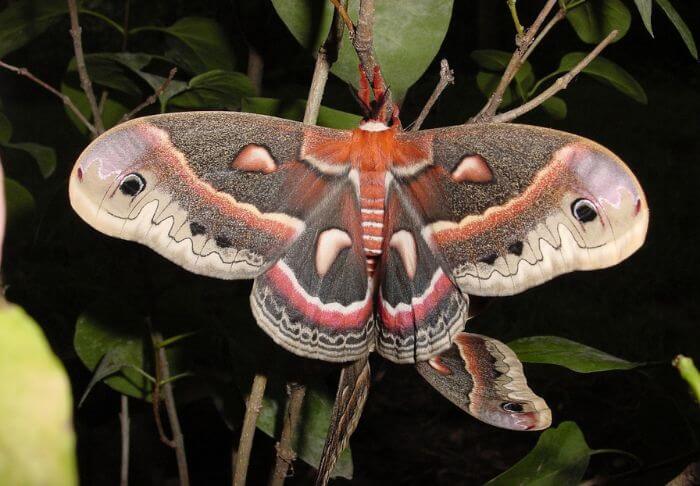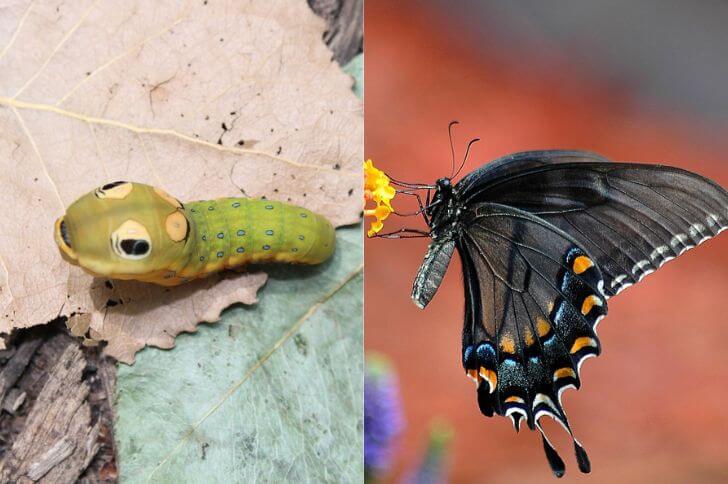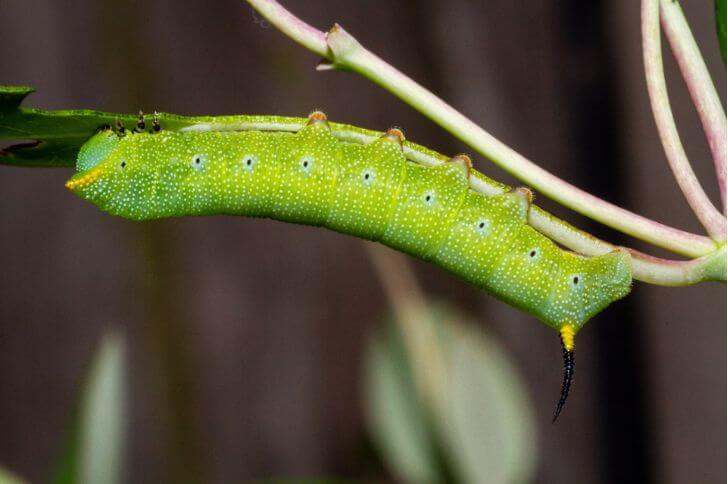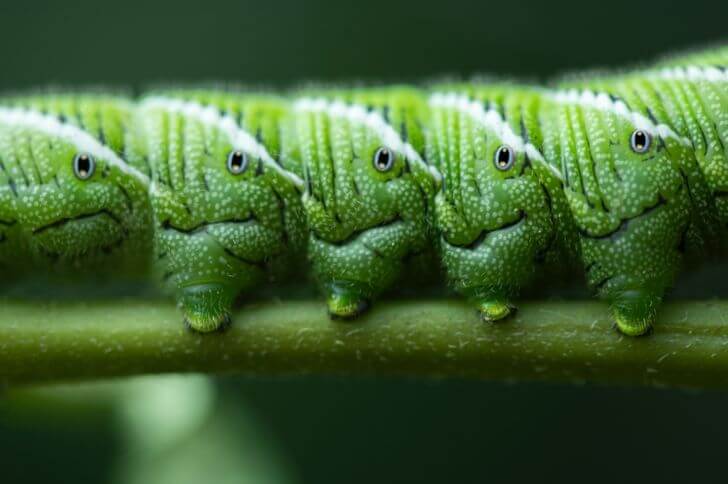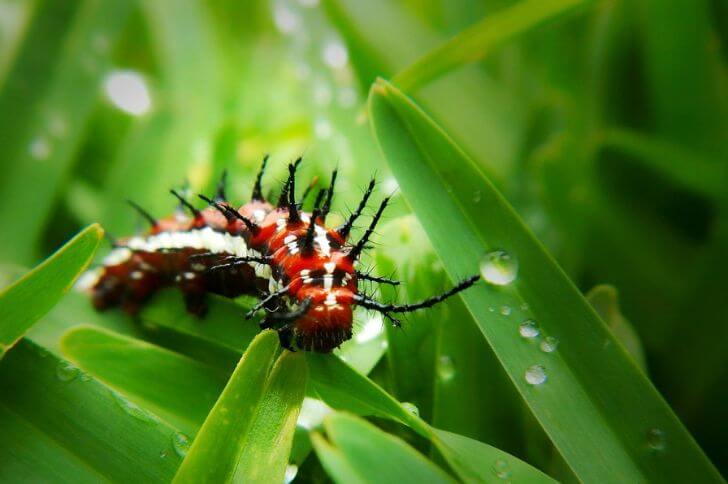Do Monarch Caterpillars Sleep?
What is sleep in the context of insect behavior?
Sleep is a mysterious phenomenon that extends beyond humans and into the fascinating realm of insects. While we might think of sleep as a state of rest and inactivity, the concept takes on a whole new meaning when observed in insects such as monarch caterpillars.
These creatures, despite lacking eyelids and obvious signs of slumber, do experience periods of reduced activity that resemble sleep.
Insects typically undergo distinct stages throughout their lives, including egg, larva (caterpillar), pupa (chrysalis), and adult. During their larval stage, monarch caterpillars display intriguing patterns of behavior that lend themselves to the idea of sleep.
Researchers have discovered that these hungry critters tend to exhibit periods of inactivity for extended durations—upwards of several hours—followed by bursts of feeding activity. Although this behavior might seem puzzling at first glance, it suggests that monarch caterpillars indeed have their own unique version of sleep.
These findings open up tantalizing questions about the purpose and function behind insect sleep-like behavior. While some scientists believe it provides a chance for growth and development by conserving energy during periods when food availability is limited or metabolic processes are intensive, others propose alternative theories.
Some suggest that sleep-like behaviors may facilitate immune or neural development in insects or even serve to regulate hormone levels critical for future transformation.
Comparison with sleep in humans and other animals
Comparing sleep in humans to that of other animals sheds light on the diverse ways different species rest. While humans typically experience a consolidated period of sleep during the night, many animals have different sleep patterns.
Take dolphins, for instance – they engage in “unihemispheric sleep,” where one hemisphere of their brain sleeps while the other remains awake, allowing them to maintain crucial functions like breathing as they rest. This adaptive form of slumber enables them to remain vigilant and react swiftly to potential threats.
Another fascinating comparison lies between humans and birds. As diurnal creatures, most birds are active during daylight hours but also need substantial periods of rest.
Research shows that some birds exhibit partial sleep by having short episodes where one hemisphere is asleep while the other remains awake. It’s almost as if their brain can multitask – imagine being able to recharge while still being alert! These distinctive sleeping behaviors across species demonstrate how evolution has shaped varied strategies for obtaining rest and ensuring survival.
Challenges in studying sleep in caterpillars
The study of sleep in animals has long fascinated scientists, but when it comes to caterpillars, the challenges are particularly unique. Understanding the sleep patterns and behaviors of these critters is no easy feat, as they have a completely different set of physiological characteristics compared to mammals or birds.
Unlike humans who exhibit clear signs of sleep such as closed eyes and reduced physical activity, caterpillars don’t possess these obvious indicators. This makes it extremely difficult for researchers to determine whether a caterpillar is truly asleep or simply resting.
One approach that has been utilized in studying sleep in caterpillars is electroencephalography (EEG), a technique commonly used in measuring brain activity during sleep in other animals.
However, this method has proven challenging with caterpillars due to their small size and the practical difficulties of attaching electrodes to their tiny heads. Moreover, even if electrodes could be successfully attached, interpreting the resulting brain wave patterns could prove problematic given our limited understanding of insect neurobiology.
Another hurdle faced by scientists studying sleep in caterpillars is determining what exactly constitutes sleep for these creatures.
In mammals and birds, sleep is typically defined by periods of reduced responsiveness to external stimuli and characteristic brain wave patterns. However, since caterpillars lack similar behavioral traits associated with traditional sleep states, defining their sleeping habits becomes ambiguous at best.
Scientific Studies on Monarch Caterpillar Sleep
Recent scientific studies have shed light on the fascinating sleep patterns of caterpillars, specifically those of the monarch butterfly. One study, published in the Journal of Insect Physiology, found that monarch caterpillars exhibit a behavior known as torpor during their developmental stages.
Torpor is a state of low metabolic activity and decreased responsiveness, similar to sleep in humans. Researchers discovered that these caterpillars enter torpor multiple times throughout the day and night, with each episode lasting anywhere from a few minutes to several hours.
Another interesting finding comes from a study conducted by researchers at The University of Michigan. They discovered that monarch caterpillars tend to be more active during the day and sleep for shorter periods compared to nighttime.
This observation suggests that light exposure plays a significant role in regulating their sleep-wake rhythms. Further experiments showed that when juvenile caterpillars were exposed to continuous darkness, their sleep duration extended beyond normal levels.
These discoveries highlight just how intricate and sophisticated the sleeping patterns of caterpillar species can be. Understanding these patterns not only expands our knowledge of insect biology but also provides insights into evolutionary adaptations and survival strategies employed by various organisms throughout nature’s vast ecosystem.
Findings from these studies
Changes in activity levels at night
At night, the world undergoes a transformation. As daylight retreats, and darkness settles in, many creatures find solace in slumber. However, for some, the cover of darkness brings about a burst of activity that is nothing short of enchanting.
One such creature is the monarch caterpillar. Known for its stunning metamorphosis into a majestic butterfly, these tiny creatures may seem unassuming during the day as they munch on milkweed leaves.
But come nightfall, they embark on an extraordinary journey. Rather than sleep like their diurnal counterparts, research suggests that monarch caterpillars remain active throughout the night – busily feeding and growing under the glow of the moon.
This adaptability to changes in activity levels at night offers a fascinating glimpse into nature’s intricate mechanisms. While most animals follow a pattern of rest and wakefulness dictated by light cycles, it seems that monarch caterpillars have developed an alternative strategy to maximize their survival chances.
By embracing nighttime as an opportunity for growth and sustenance when predators are less active or absent altogether, these remarkable creatures showcase nature’s adaptability and remind us that there is always more to discover about our natural world after dark.
Caterpillar Brain activity during rest periods

Research has shown that monarch caterpillars, despite their small size and seemingly simplistic behaviors, exhibit intriguing brain activity during their rest periods. While it might be tempting to dismiss these critters as mindless eating machines, studies have shown that they actually experience brief periods of rest where their brain activity changes significantly.
Electroencephalogram (EEG) recordings have revealed distinct patterns of brain waves, similar to those observed in vertebrate species during sleep. This discovery challenges our understanding of the insect brain and raises fascinating questions about the purpose and function of these rest periods for caterpillars.
One possible explanation for this brain activity is that caterpillars use rest periods to consolidate information acquired throughout their active feeding phases. Just like humans need deep sleep to process memories and learn new skills, monarch caterpillars may require these resting moments for mental consolidation.
Further research is needed to understand if this period of altered brain activity represents a form of sleep or serves other cognitive functions unique to insects. By shedding light on the complex world hidden within even the humblest creatures on Earth, we gain not only a deeper appreciation for nature’s incredible diversity but also a better comprehension of cognition itself.
Caterpillar Sensitivity to external stimuli during rest
Caterpillars, those tiny creatures with voracious appetites and vibrant colors, may seem to spend their days solely focused on eating and growing. However, recent research suggests that even during periods of rest, these seemingly inactive caterpillars can remain highly attuned to their surroundings.
Contrary to the popular belief that they are simply dormant or sleeping, caterpillars display a remarkable sensitivity to external stimuli while at rest.
Studies have shown that caterpillars are capable of detecting subtle changes in light intensity, temperature fluctuations, and even vibrations in their environment during periods of rest.
This heightened responsiveness allows them to quickly respond to potential threats or opportunities for feeding. It appears that these colorful critters possess an intricate defense mechanism that ensures their survival not just when they’re active but also when they’re seemingly at rest.
Furthermore, researchers have observed that certain environmental cues can actually induce a state similar to sleep in caterpillars. Just like humans experiencing deep sleep cycles which aid memory consolidation and growth hormone release, it is believed that a caterpillar’s resting phase serves crucial functions such as body development and metamorphosis preparation.
While more research is needed to fully understand the intricacies of this behavior in caterpillars, it is clear that there is much more beneath the surface than meets the eye when it comes to these fascinating creatures’ sensitivity to external stimuli during rest.
The monarch butterfly, scientifically known as Danaus plexippus, undergoes a truly remarkable life cycle. From egg to caterpillar, pupa to adult butterfly, each stage is filled with intriguing transformations and survival strategies.
The journey begins when the female monarch lays her tiny eggs on the underside of milkweed leaves. These eggs hatch into minuscule larvae known as caterpillars. Over the course of approximately two weeks, these voracious eaters consume vast quantities of milkweed leaves to fuel their growth. It’s fascinating to witness how this insatiable appetite helps them reach up to 2 inches in length before they’re ready for their next evolution.
Once fully grown, the caterpillar finds a suitable spot and attaches itself using silk threads it produces from its body. It then transforms into an emerald-green chrysalis through a process called metamorphosis. Within this delicate cocoon, hidden away from predators’ prying eyes, the magic of transformation takes place over around ten days or so.
Finally, emerging from its chrysalis as an adult butterfly brings forth wonder and awe. The once humble caterpillar now unfurls its vibrant orange and black wings, showcasing patterns that serve more than mere aesthetic purposes; they play a crucial role during migration and mating encounters.
In conclusion, understanding the monarch butterfly’s life cycle offers us glimpses into nature’s incredible complexity and adaptive mechanisms.
Daily activities and behaviors of monarch caterpillars
Monarch caterpillar Feeding
Monarch caterpillars are voracious eaters, consuming an astonishing amount of milkweed leaves during their feeding frenzy. This insatiable appetite is due to the fact that milkweed is not only their primary source of food but also contains toxic compounds that provide them with defense against predators.
Interestingly, while most caterpillar species chew on leaves, monarch caterpillars have a unique way of eating – they use their mouthparts to break down the leaf and then suck up the juice.
As these tiny creatures munch on milkweed, they gain essential nutrients and energy necessary for their growth and development. It’s fascinating how monarch caterpillars can increase several thousand times in weight within just a couple of weeks by devouring copious amounts of leaves.
Moreover, studies show that the more milkweed they consume during this period, the bigger and healthier they become as adults. So it seems that these vibrant creatures have mastered the art of feeding efficiently to ensure their survival in both larval and adult stages.
To witness a monarch caterpillar feeding is nothing short of mesmerizing; its constant movement as it nibbles away at a leaf can be almost hypnotic. But beyond its captivating appearance lies an incredible feat of adaptation and evolution.
The ability to process toxins from milkweed plants has not only made monarch caterpillars distasteful to predators but has also earned them protection from harm throughout their life cycle—a true testament to nature’s ingenuity in nurturing biodiversity.
Resting
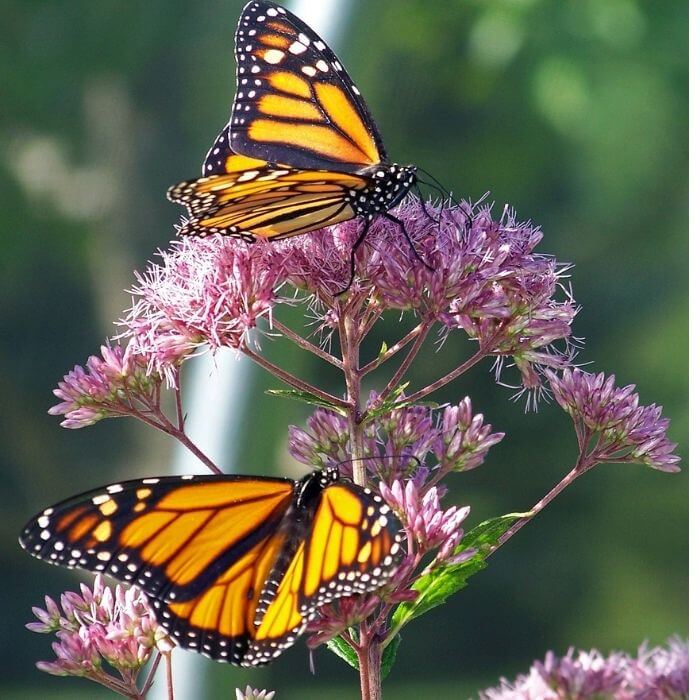
Monarch caterpillars: they are not just cute and colorful creatures, but also fascinating in their behavior. Have you ever wondered if monarch caterpillars sleep? Believe it or not, these little adventurers do take some time to rest!
Just like humans, monarch caterpillars need their beauty sleep. When they have had their fill of munching on milkweed leaves, these tiny creatures find a safe spot to relax.
Their bodies become still and motionless as they enter into a state of dormancy. During this resting period, which can last for several hours at a time, the caterpillar’s metabolism slows down drastically and its breathing becomes almost imperceptible.
But what purpose does this resting period serve? Researchers believe that it is during this time that the caterpillar’s body undergoes crucial growth and development processes.
It is when important internal changes occur within their bodies that mold them into the stunning butterflies they are destined to become. While we may not witness the dramatic transformations happening inside the caterpillar during its resting phase, we can appreciate how essential it is in shaping their future as magnificent monarch butterflies.
source:
Passionate animal photographer with an unwavering love for capturing the essence and beauty of our furry friends.
With over five years of experience in the field, I have developed a unique ability to connect with animals on a deeper level, allowing me to create stunning and captivating images that truly reflect their personality.
Let’s collaborate to capture unforgettable moments that celebrate the unique bond between humans and animals!
